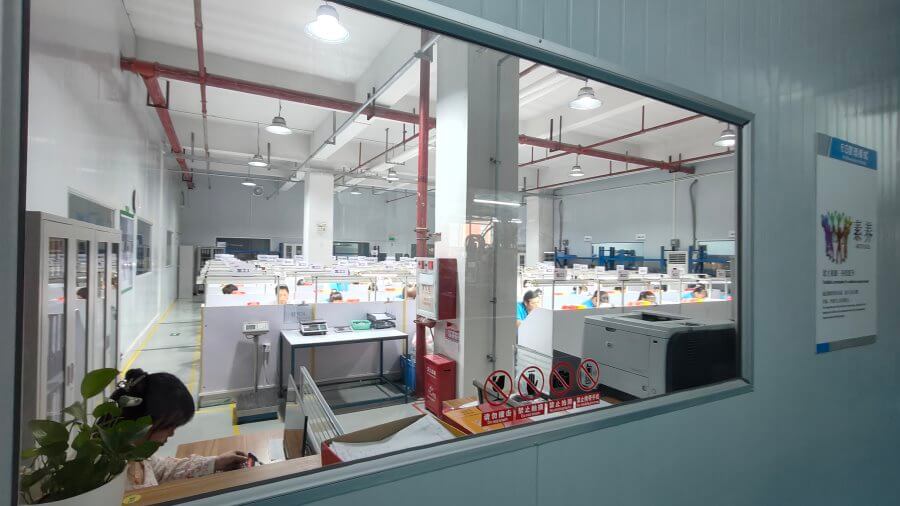What is Silicone?
Silicone is extracted from silicon sand derived from silicate minerals, which is then refined into silica. It is a highly active adsorbent material that is insoluble in water and any solvent. Silicone is non-toxic, odorless, and chemically stable, reacting with no substances except strong alkalis and hydrofluoric acid. Silicone has different structural characteristics depending on its manufacturing method. Its features include high adsorption performance, excellent thermal stability, chemical stability, and high mechanical strength. Silicone’s waterproof and insulating properties make it especially suitable for industrial sealing and pressing needs, ensuring product stability. In terms of temperature tolerance, silicone can withstand temperatures ranging from -40°C to 230°C. Additionally, since it is non-toxic, it is particularly well-suited for use in the food industry and biomedical fields.
Organic vs. Inorganic Silicone: Key Differences and Uses
Organic Silicone
Organic silicone is a unique material made by combining silicon from quartz sand with organic macromolecules, creating a composite that blends the benefits of both inorganic and organic materials. This gives it superior performance in applications where other materials fall short.
It offers a range of outstanding properties, including high and low-temperature resistance, weathering resistance, electrical insulation, ozone resistance, hydrophobicity, fire resistance, non-toxicity, corrosion resistance, and biological inertness. Some variations also provide oil resistance, solvent resistance, and radiation resistance. Compared to other polymers, organic silicone excels in temperature resistance, dielectric properties, weather durability, and low surface tension.
Types of Organic Silicone:
- Room Temperature Vulcanized (RTV) Silicone – Cures at room temperature and includes:
- RTV-1: Single-component silicone.
- RTV-2 (AB Glue): Two-component silicone, further divided into:
- Condensation-type RTV: Moisture-curing.
- Addition-type RTV: Cures at room temperature or with heat.
- High-Temperature Vulcanized (HTV) Silicone – Cures at high temperatures and includes:
- Solid Silicone (HTV).
- Liquid Silicone Rubber (LSR): Highly flowable, injection-molded, and widely used in medical devices and baby products due to its high transparency and cleanliness.
Inorganic Silicone
Also known as silica micro powder, inorganic silicone is an amorphous material derived from the reaction of sodium silicate and sulfuric acid. It undergoes processing and washing to form a sponge-like structure with interconnected micro-pores, giving it a high surface area for moisture absorption and retention.
It is non-toxic, odorless, and chemically stable, reacting only with strong alkalis and hydrofluoric acid. Its specialized pore structure gives it excellent adsorption capacity, thermal and chemical stability, and mechanical strength, making it irreplaceable in various applications.
Types of Inorganic Silicone:
- Fine-pore silica
- B-type silica
- Coarse-pore silica
Due to its high absorbency and durability, inorganic silicone is commonly used in industries requiring moisture control, purification, and insulation.
Solid Silicone HTV
Solid silicone, also known as High Temperature Vulcanized (HTV) Silicone, is one of the most essential organic silicone products. It undergoes high-temperature vulcanization (110-180°C), transforming raw silicone into a durable elastomer. The base material is typically high molecular weight polymethylvinylsiloxane, which is blended with reinforcing agents and additives to enhance its properties. Because of this process, it is also called heat-vulcanized silicone.
How HTV Silicone is Made
- Primary Vulcanization – The compounded silicone is placed in a mold, subjected to about 5 MPa of pressure, and heated at 110-180°C for 10-30 minutes to begin vulcanization.
- Demolding & Secondary Vulcanization – Once removed from the mold, the product undergoes further curing in an oven at 200-250°C for 24 hours. This step enhances stability and performance.
Exceptional Properties
HTV silicone stands out for its:
1. Extreme temperature resistance (both high and low)
2. UV, radiation, and weather resistance
3. Electrical insulation & high permeability
4. Biological inertness, low compression set, and fatigue resistance
Applications Across Industries
Thanks to these properties, HTV silicone is used in a wide range of fields:
- Aerospace & Automotive: Seals, gaskets, tubes, and cables
- Electronics & Instrumentation: Insulation materials
- Medical & Healthcare: Artificial organs, blood vessels, breathable membranes
- Manufacturing: Rubber molds, precision casting release agents
Processing & Molding Methods
HTV silicone is shaped using various techniques:
1. Compression Molding – Uses heat and pressure to form solid parts.
2. Extrusion Molding – Produces continuous profiles like tubes and cables.
3. Calendaring & Coating – Used for thin sheets and specialty applications.
The primary vulcanization process initiates the polymer cross-linking, while secondary vulcanization removes decomposition byproducts and stabilizes the material. Key equipment includes open mill mixers, kneaders, and vacuum mixers for precise formulation and processing.
With its unbeatable durability and versatility, HTV silicone remains a top choice for industries requiring high-performance elastomers.
Compression Molding (Hot Press Molding)
Compression molding, also known as hot press molding, is a widely used technique that shapes solid silicone using heat and pressure from a hydraulic press. This process vulcanizes silicone into its final form within a mold, making it ideal for custom single-color silicone products. It can also accommodate multi-color, multi-hardness designs or products with plastic and metal encapsulation, provided the encapsulated materials can withstand temperatures up to 180°C without deforming.
How Compression Molding Works
- Preparation – The raw silicone material is evenly mixed using a mill. Additives like white carbon black and silicone oil are blended in to adjust hardness and performance.
- Molding & Vulcanization – The material is placed inside a closed mold cavity, and the hydraulic press applies heat and pressure, typically in the range of 30-70A Shore hardness.
- Curing & Demolding – The silicone cures (vulcanizes) under controlled conditions, and once set, the final product is removed from the mold.
Why Use Compression Molding?
- Stable & efficient process – Ideal for mass production
2. Versatile applications – Works for single-color and multi-hardness designs
3. Encapsulation capability – Can coat plastic or metal components (if they tolerate 180°C)
Common Applications
Compression molding is one of the most widely used methods in the silicone industry. It is used to manufacture:
- Industrial components & buttons
- Silicone wristbands, keychains, and phone cases
- Silicone kitchenware, mats, and ice cube trays
- Cake molds & baking accessories
Since the mold determines the final shape, precision and quality play a crucial role in the process. This reliable technology continues to be a cornerstone in the production of high-quality silicone products across multiple industries.
Liquid Silicone Rubber (LSR)
Liquid Silicone Rubber (LSR), also known as liquid silicone or injection-molded liquid silicone. It is a highly flexible thermosetting material that flows in liquid form before curing into an elastomer. It is non-toxic, heat-resistant, and highly resilient, making it ideal for high-precision, high-volume manufacturing. LSR is known for its low viscosity, rapid curing, shear-thinning behavior, and high thermal expansion coefficient.
What Makes LSR Unique?
LSR is often associated with Liquid Injection Molding (LIM), a process that ensures precise dimensions with a linear shrinkage rate of ≤ 0.1%. This allows manufacturers to produce consistent, high-quality silicone parts with excellent detail and accuracy.
Key Properties of LSR
- Two-component system – Made from a 1:1 weight or volume ratio
- Fast curing & high transparency – No need for special equipment
- Heat & flame resistance – Can withstand extreme temperatures
- Superior chemical & weather resistance – Highly durable
- Excellent insulation properties – Ideal for electrical applications
How LSR is Made
LSR consists of:
- Base polymer: Polymethylvinylsiloxane
- Crosslinking agent: Polymethylhydrogensiloxane
- Catalysts: Platinum, tin, or metal complexes
- Fillers (optional): Fumed silica, iron oxide, titanium dioxide, carbon black, or silicon wax for transparency
LSR is formed through a crosslinking reaction between the SiH group in the crosslinking agent and the Si-CH=CH₂ group in the base polymer. This reaction creates a durable, flexible elastomer that is widely used in industries requiring precision and performance, such as medical devices, automotive components, and electronics.
Liquid Injection Molding (LIM)
Liquid Injection Molding (LIM) is an advanced, highly automated process that eliminates manual steps like mixing, kneading, and cutting. Using injection molding machines, LIM ensures high precision, efficiency, and consistency with minimal labor.
How LIM Works
- Raw materials are fed into the machine.
- A static mixer combines the A/B silicone components.
- The mixture is injected into a mold cavity.
- The mold is heated, triggering vulcanization.
- The finished product is removed.
This method offers high output, fast curing, and easy defect detection due to the transparency of Liquid Silicone Rubber (LSR). It also reduces labor, energy use, and material waste.
LSR in LIM
LSR consists of a 1:1 mix of two silicone components with viscosities ranging from 50,000 to over 1,000,000 cPs, typically cured using a platinum-catalyzed additive system at 80°C+. Its composition includes:
- 75% linear silicone polymer (flexibility & elasticity)
- 23% fumed silica (strength & stress resistance)
- Curing additives (crosslinkers & stabilizers)
Uncured LSR has a Vaseline-like texture and requires specialized equipment to prevent air entrapment.
Hardness & Mechanical Performance
Hardness affects LSR’s tear strength, elongation, and durability:
- Solid Silicone: Typically 30A–70A
- Liquid Silicone: Commonly 0A–70A
- Below 0A: Custom-made, measured with a Shore C durometer
- 80A–90A: Exists but brittle and less common
- Above 90A: Measured with a Shore D durometer, very hard but lacks elasticity
Tear Strength & Flexibility:
- Below 10A: High elongation, low tear strength, prone to deformation
- Above 40A: Becomes brittle, prone to cracking
- Optimal range (20A–40A): Best tear strength and elongation
- Most common (50A–70A): Used in everyday silicone products like bowls, placemats, and tubing
LIM’s precision, speed, and efficiency make it the preferred method for high-quality, cost-effective silicone manufacturing, ensuring superior product performance.
Silicone Product Manufacturing Process
Silicone is a type of organic silicon product that possesses excellent high and low-temperature resistance, UV resistance, radiation resistance, weather resistance, electrical insulation, high permeability, physiological inertness, low compression permanent deformation, and fatigue resistance. Therefore, silicone is widely used in industries such as aerospace, electronics, machinery, construction, chemicals, medical devices, daily consumer products, and food processing. Silicone molding methods include compression molding, injection molding, extrusion, calendering, transfer molding, and drop casting.
The manufacturing process for silicone products involves the following steps:
Step 1: Mold Design
Design the mold based on the 3D CAD files for the product.
Step 2: Raw Material Inspection
Purchase the required silicone raw materials based on the product’s characteristics and inspect the quality of the incoming materials to ensure they meet the required specifications.
Step 3: Material Selection and Mixing
Select the necessary additives such as curing agents and colorants, and mix them with the raw material.
Step 4: Kneading
Silicone raw materials are generally in block form and are usually white in color. These raw materials cannot be directly molded; they must be mixed with a curing agent (vulcanization catalyst). If the product has specific requirements, such as color, glow-in-the-dark, fluorescence, or conductivity, relevant additives must also be mixed. The material is then kneaded in a rubber mixing machine, with the kneading process typically taking around 30 minutes (depending on the weight of the raw material and the gap between the rollers).
Step 5: Cutting
After kneading, the silicone material is cut to size (length, width, and thickness) and left on a drying rack to rest for around 8 hours (with both sides protected by PE films to maintain cleanliness).
Step 6: Molding
After the resting period, the material is molded using compression molding, liquid molding, extrusion, drop casting, etc.
Currently, there are two types of high-temperature silicone in the market: solid silicone and liquid silicone. Solid silicone molding can be further divided into hot press molding and extrusion molding, while liquid silicone molding includes injection molding and drop casting.
Conclusion
Dafeng focuses on the customized development of silicone products, and its production process has passed international ISO9001 certification. The silicone raw materials provided by Dafeng Zhengye meet FDA and LFGB food-grade standards and are tested by Taiwan SGS. The company serves many well-known clients in industries such as industrial manufacturing, electronics, food processing, and medical devices. As a professional silicone factory and Taiwanese silicone manufacturer, Dafeng Zhengye can offer the most suitable product development services.





